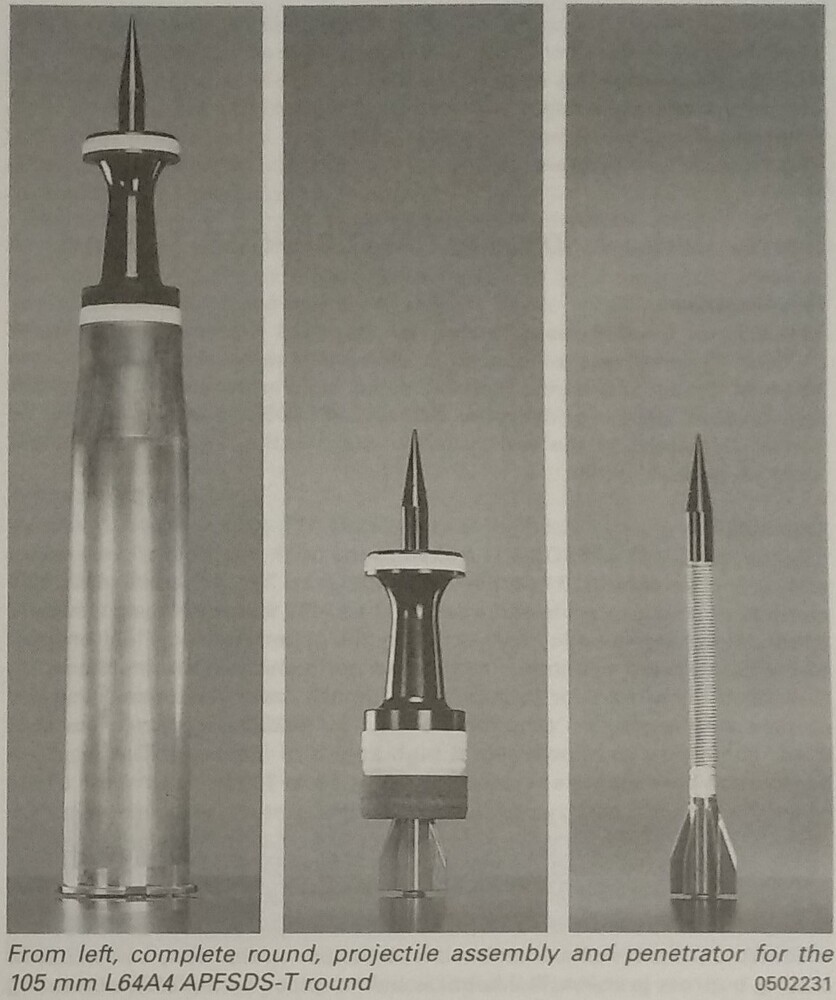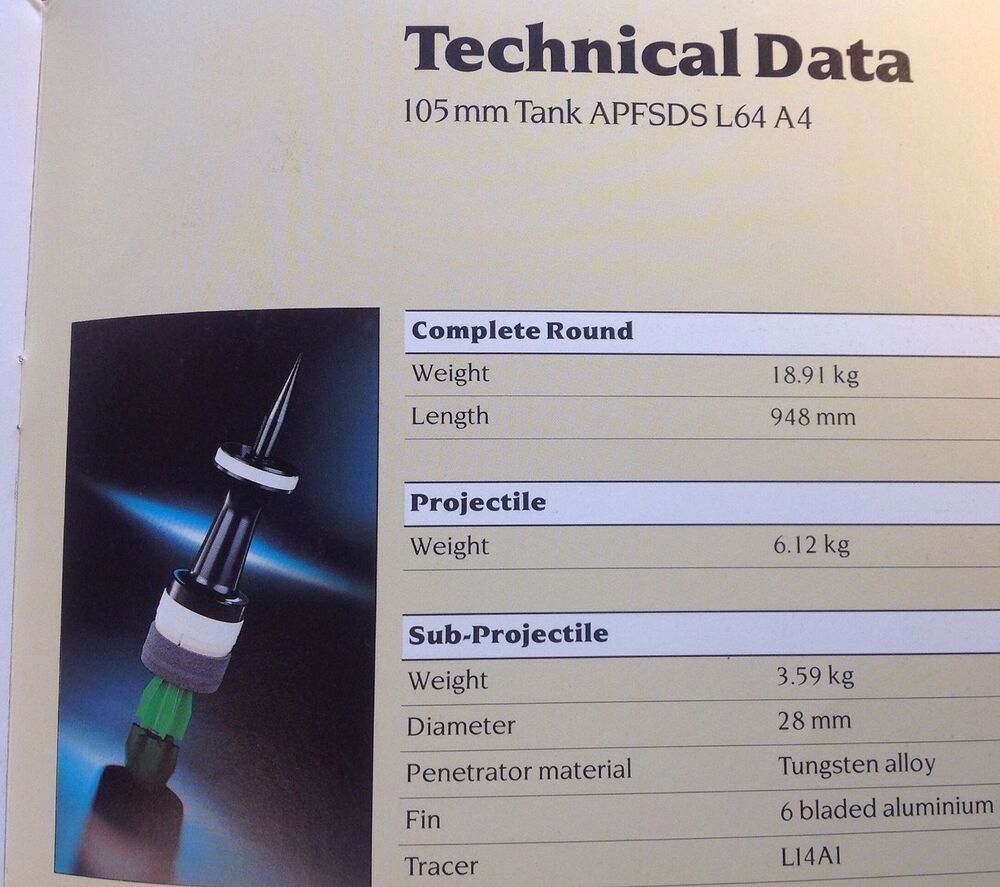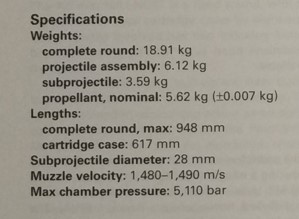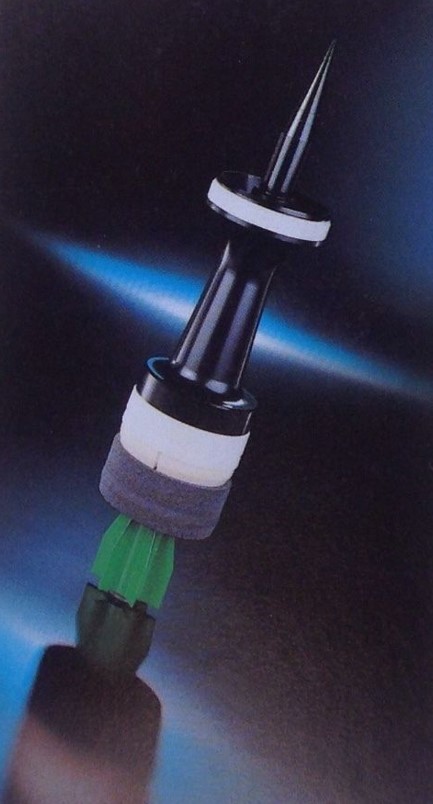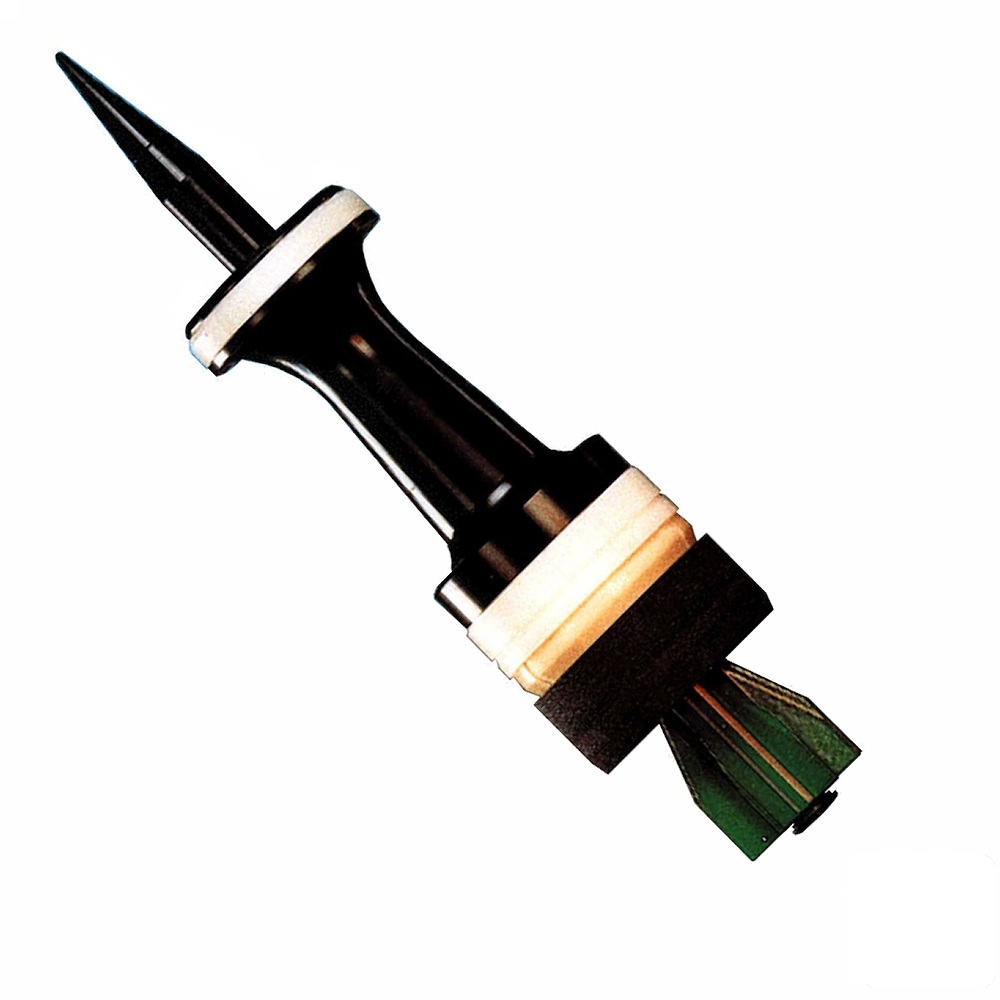- Yes
- No
Introduction & History
The British 105 mm L64A4 Armour Piercing Fin-Stabilised Discarding Sabot Traced (APFSDS-T) round was developed by Royal Ordnance (later BAE Systems, RO Defence) as a first-generation APFSDS-T round to replace the earlier APDS ammunition fired by the widely used 105 mm L7 tank gun. It provided a major step forward in armour penetration capability, and its compatibility with L7, M68, and other derivative 105mm guns allowed for potential adoption by a wide range of international users. Although the British Army eventually retired the L7 gun, the L64A4 series continued to see service, with production also undertaken in Pakistan through the Pakistan Ordnance Factories.
The L64A4 is a fixed round, with the projectile assembly crimped into a standard 105 mm cartridge case. The projectile assembly is made up of a sabot and a sub-projectile. The sub-projectile is a solid monobloc tungsten-alloy penetrator rod with a 28 mm diameter and a weight of 3.59kg. The forward section is fitted with an aluminium windshield, while the rear end carries a six-finned extruded aluminium tail assembly containing an L14A1 tracer. The sabot, made of three aluminium segments with spacers, holds the penetrator in place using a plastic band at the front and a slipping obturating band near the base. The cartridge case itself is brass, filled with approximately 5.6 kg of triple-based propellant known as WNC LM1900, and fitted with an electrical primer.
In terms of performance, the L64A4 achieves a muzzle velocity of 1480 - 1490 m/s and is capable of defeating NATO single and triple heavy targets at ranges up to 2,000 m, with accuracy better than 0.3 mil in both horizontal and vertical dispersion at 3,000 m. Demonstrated in service from the early 1980s, the round remained in production through the 1990s, supported by RO Defence’s ongoing marketing efforts.
In game, as a first generation APFS-DS round, L64A4 would provide near-identical performance to existing early 105mm ADFS-DS such as DM23 and C76A1, but would be a unique domestic addition for the earliest APFS-DS firing British tanks, like the Vickers Mk 11, as well as an option for a stock or low-tier modification for later British 105s, such as the VFM5, or tanks that are yet to come, like the GKN Warrior 105, Vickers Mk 3I, Mk 3M, or Vickers Valiant Mk 4 (105).
Specifications
Images
Sources
